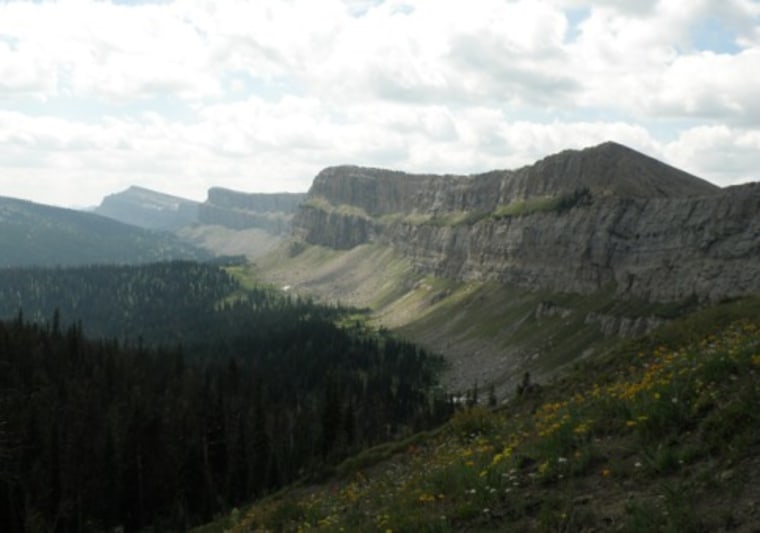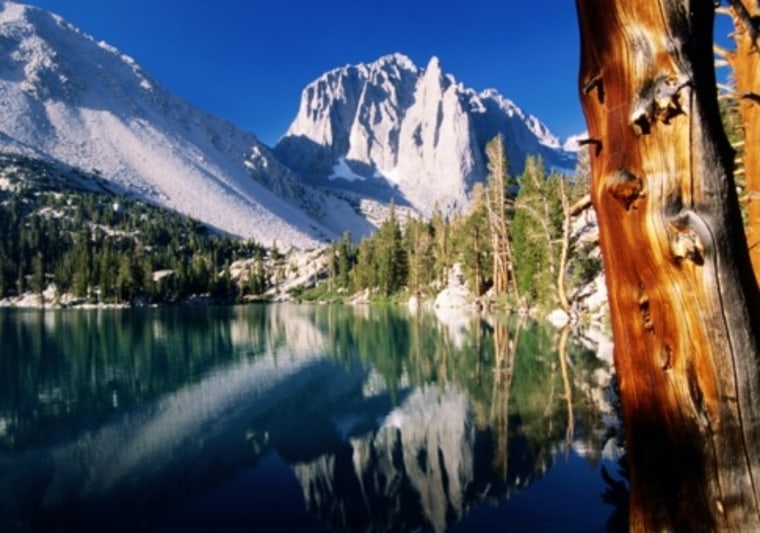True escape from city life doesn't have to mean a trip outside the U.S. Inside America's borders are some of the most remote, pristine spots on the planet.
The U.S. has more than 100 million acres of the National Wilderness Preservation System (NWPS), public lands that — since the 1964 passage of the Wilderness Act — are protected from human influence and disruption. For the outdoorsy traveler looking for remoteness, solitude and a sense of nature, Wilderness areas offer all these things in abundance.
And getting there is half the fun: You can travel into and across a designated Wilderness area on foot or on horseback only, and any kind of mechanized or motorized equipment or transport is forbidden. While the John Muir Wilderness Area in the Inyo National Forest isn't far from Fresno, Calif., considerable time and expense will be involved getting to, say, the Boundary Waters Canoe Area Wilderness Area on the Minnesota-Canada border. Minneapolis is a six-hour drive away from the Boundary Waters.
Generally speaking, a wilderness area is roadless, except in cases where roads were laid before Congress designated the land — but no vehicle can access such a road. Wilderness lands fall under the management of the National Park Service, the Bureau of Land Management, the Fish & Wildlife Service and the Forest Service. Many are found within or bordering on National Forests. The wilderness designation is an extra level of Congress-mandated protection.
The Forest Service has recommended an additional 4 million acres to Congress for classification in the NWPS. Not all of them may be approved but, even so, as more areas gain this extra level of protection, money for wilderness management doesn't always follow. The National Park Service, for example, has more wilderness acres than any of the other agencies (44 million), yet the NPS receives less than $500,000 in total federal money for them each year, according to an agency spokesperson.
Natural isolation
To highlight some of America's best wilderness areas, we generated a list based on two criteria: The wilderness areas had to be either among the most sizeable, acreage-wise, in their given region, or they had to offer something truly unique unto themselves.
"When we look at the characteristics of a given place under consideration as a wilderness area, we're looking for outstanding opportunities for solitude and primitive recreation, and also special features specific to that landscape," explains Terry Knupp, wilderness program leader for the National Forest System.
In all Wilderness areas, self-powered transport is the name of the game, but it needn’t all be on foot. The Misty Fjords National Monument Wilderness, in southern Alaska, and the aforementioned Boundary Waters Canoe Area Wilderness, in Superior National Forest, on the Minnesota-Canada border, both offer hardcore paddlers with ample opportunities for deep exploration (one can take a motorboat or seaplane into Misty Fjords, then continue the journey on foot once on land). Between the two, groups of kayakers and canoeists will find that Superior's network of portages and camps easily supports a mellow, more leisurely tour.
The serious trekker, climber and back-country campers seeking that special landscape of solitude should look to three of the greatest Wilderness areas in the Lower 48, named for major players in America's conservation history: the Bob Marshall (Montana), John Muir (California) and Frank Church (Idaho) Wilderness areas. Within these areas are some of the most grand, unchanged and classic Western landscapes. Plateaus, high rocky crags and endless river valleys are the norm. If there's any one drawback, it's the immense size of each area — it would take weeks if not months to explore just one of these places.

But even a "smaller" Wilderness, such as the 45,000-acre Pemigewasset Wilderness in White Mountain National Forest, in New Hampshire, can present more remote forest than most people could backpack in a week. Some of the major Western Wilderness areas, such as California's John Muir, will experience a good deal of human activity at trail heads and lower elevations in good weather. But the opportunity to get away extends for many miles.
Walk on the wild side
Along with it comes the chance to see animals one doesn't come across in everyday life. The Cranberry Wilderness in the Monongahela National Forest in West Virginia serves as a sanctuary for black bears. While there is no official refuge in the Pemigewasset Wilderness, an abundance of wildlife, including moose and black bear, are often seen by human visitors. The Cohutta Wilderness, in the Chattahoochie-Ocone National Forest in northern Georgia, offers some of the best trout fishing to be found that far south. (Hunting and fishing both are generally permitted in wilderness areas across the U.S.)
The key to enjoying these places? Good gear — especially boots. You're not going to get very close with a car or truck — maybe as far as a trailhead. But if you've got the willingness to put some distance between yourself and the parking lot, you're on your way.
